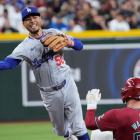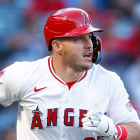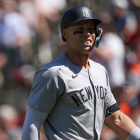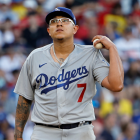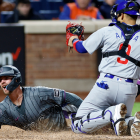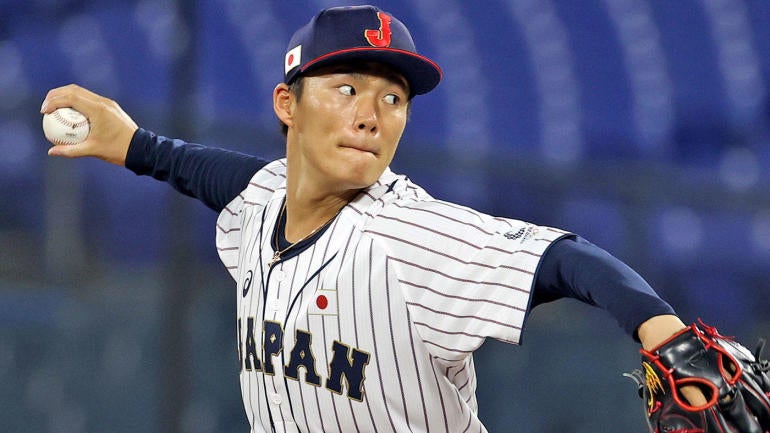
Japanese ace Yoshinobu Yamamoto, CBS Sports' No. 2 free agent this winter, is going to be a Dodger. The NPB ace is set to ink a 12-year, $325 million deal and join Shohei Ohtani in Los Angeles, where the NL West darlings have powered up and then some this offseason. Even before that, Major League Baseball's high rollers were desperately trying to win the sweepstakes, as the New York Mets and New York Yankees joined the Dodgers as the frontrunners since he was posted.
Last week, we laid out why teams are enamored with Yamamoto, to the extent that several league sources have relayed expectations that bidding would exceed the $300 million mark, which will shatter the previous record for an incoming overseas pitcher ($325 million does, in fact, do so). That distinction previously belongs to Masahiro Tanaka and the $155 million pact he inked with the New York Yankees in January 2014.
The short version of that piece goes like this: Yamamoto is an impossibly accomplished 25-year-old who has achieved rare feats in Nippon Professional Baseball history. (He won the league's MVP and Cy Young equivalents in each of the last three seasons.) Yamamoto also checks almost all of the boxes that MLB talent evaluators look for in frontline starters. As it stands, he has great command over a good arsenal, including a mid-90s fastball, a swing-and-miss splitter and a picturesque curveball. Factor in the rich history of Japanese pitchers transferring to MLB and succeeding, and you have a compelling argument for spending as much as it takes to land him this offseason.
Today, we're going with a different approach. You may be familiar with the "red team" concept in business circles. (Well-adjusted people are more likely to refer to it as "playing devil's advocate.") In layman's terms, it's a way of stress-testing thoughts and proposals. If, after poking as many holes in an idea as you can muster, you still think it's worth pursuing … well, then you can probably proceed since the idea must be a sound one to endure such analysis.
Below, CBS Sports has identified three risk factors with Yamamoto that may have caused teams pause -- as well as brief counterarguments to those points. Bear in mind that this is only a thought experiment.
Now, let's get to it:
Risk factor No. 1: He's never pitched in MLB
There are some important differences between NPB and MLB. Most notably, they use different baseballs (the NPB ball is pre-tacked, and is often praised by Americans accustomed to MLB's ball) and an alternative schedule that sees starters pitch once a week. There's a reason the Angels reliably used a six-pitcher rotation during Shohei Ohtani's time there.
There are enough instances of successful transfers for us to think Yamamoto will be fine. That established, we can understand why some might want to see him do it before they hand over the kind of contract reserved for only the very best MLB starting pitchers. Proponents of this thinking would probably note that the marketplace still contains Blake Snell, a two-time Cy Young Award winner, who is expected to make significantly less than Yamamoto. Should that be the case? It depends on your perspective.
Counterargument: What can we say? It's a fact that Yamamoto has not pitched in MLB. Teams pride themselves on paying for what players will do, not what they have done. They're also showing an increased appetite for gambling on inexperienced players making seamless transitions to The Show, however. To wit, the Brewers guaranteed $82 million to teenage outfielder Jackson Chourio. Admittedly, that's baby money compared to the prospective Yamamoto bidding, but there are more examples of NPB pitchers flourishing stateside than there are of pre-debut extensions working out in the team's favor. Besides, Yamamoto has excelled in the world's second-best league and on the international stage (he even used the MLB ball in the World Baseball Classic). We think this talking point is overstated as a result.
Risk factor No. 2: Yamamoto is relatively short
Teams have long sought out pitchers with physically imposing frames. Think: 6-foot-2 (or taller) with broad shoulders. Those pitchers were desired for two main reasons. Foremost, the assumption was that they were more capable of withstanding the physical demands of making 30-plus starts a season. Secondly, scouts and analysts believed their height would help them create a downward plane to the plate, giving their pitches additional life that would befuddle hitters.
When we wrote in the introduction that Yamamoto "checks almost all of the boxes MLB talent evaluators look for in frontline starters," this was the exception that we had in mind. He's listed at just 5-foot-10, 176 pounds.
We will note that height and weight data is notoriously unreliable -- especially on the extremes. Even so, there were only three pitchers last season who started 10 or more games while being listed as shorter than 6-feet tall and lighter than 200 pounds: Marcus Stroman, Sonny Gray, and JP Sears. Perhaps encouragingly, if you accept that teams fudge around with these numbers, then six other pitchers were listed at exactly 6-feet tall. It stands to reason that a few of them are actually shorter, providing more proof of concept.
As for the plane part -- well, we'll address that below.
Counterargument: Do shorter pitchers actually get hurt more often? A decade-old study at The Hardball Times indicated that pitchers shorter than 6 feet were "twice as likely" to end up on the IL "as the overall population." If you put stock into those findings, that would be bad news for Yamamoto's employer. Other past research suggests that previous injuries are the best predictors of future injury. If you put stock into those findings, that would be good news for Yamamoto's employer, given that he does not have an extensive medical history.
As for the plane aspect -- the league has shifted gears in that respect. Teams nowadays want pitchers with flat release points to the top of the zone. Think Spencer Strider, Cristian Javier or Freddy Peralta. (Strider and Peralta are both listed at 6-foot exactly.) Yamamoto not only has that, he also has good rising action on his fastball, empowering him to pitch up in the zone. Consider this a good news/bad news subheading, depending on which study you want to treat as the more relevant piece of work.
Risk factor No. 3: Yamamoto is a pitcher
This one is about as straightforward as it gets. Pitchers are tough to count on because they're far more likely to get injured than batters. There's a reason why concepts like "TINSTAAPP" remain relevant, and there's a reason why the richest contract for a pitcher (not including Ohtani) ranks 11th overall.
As for our man of the moment, Yamamoto is a pitcher -- and only a pitcher. Therefore, it's fair to feel at least some trepidation about handing him a massive contract, no matter how good he is or how well his game should transfer to MLB.
Counterargument: There's no real counterargument to be made here. Pitchers do get hurt, a lot, and even workhorses eventually break down. The best we can offer is that you still need to field a starting rotation. Yamamoto, whatever credence you give to the above factors, gives you the chance to add an impact starter for however long he remains healthy. It might be a season, it might be eight. If and until someone finds out how to predict pitcher health, all you can do is bet on the best and healthiest.
For many teams, no matter how many times they turn to their internal "red team," Yamamoto fits that description -- that, in addition to everything else, is why he got his massive payday.
















